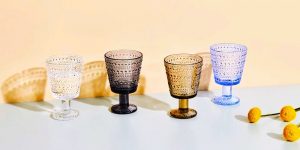Helena Tynell’s most famous Aurinkopullo vase
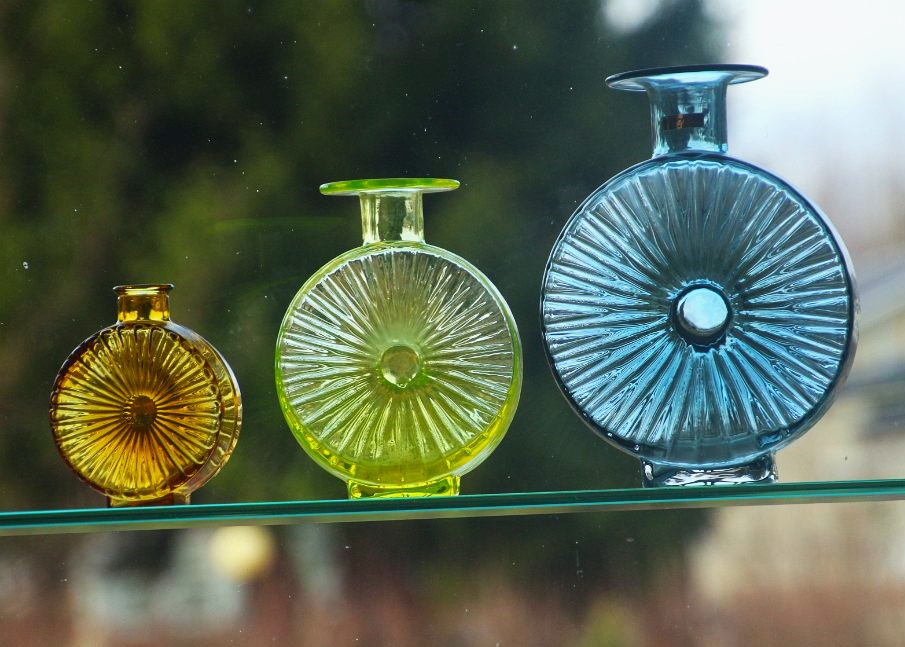
The official name of the Riihimäki Glass Aurinkopullo is Aurinko. It was designed by Helena Tynell (1918-1974), a designer with an international career. The Aurinkopullo was designed in 1963 and was in production from 1964 to 1974. Aurinko was made in four different sizes. The vase, which gained great popularity, is known to have at least 19 different shade variations. Many of the smaller sizes were produced in large quantities at the time, and over the years, the Aurinkopullo, especially in the largest sizes and rarer colors, has become a highly sought-after collectible among art glass collectors. Collectors can pay up to thousands of euros for the rarest red vase.
At the Riihimäki glass factory, Aurinkopullo vases were made from the leftover glass mass at the end of the day. As a result, there are countless color shades. The bottle is sculptural and difficult to make. The walls of the center part of the Aurinko are close to each other but not quite touching.
The designer of Aurinkopullo, Helena Tynell (1918–2016), was always a very creative and inquisitive designer. Tynell graduated from the Central School of Arts and Crafts (now Ateneum) in 1943. She was supposed to become a sculptor, and this dream is evident in her 1947 Sea Anemone vase.
In the 1960s and 1970s, Tynell’s sculptural vision only intensified, and towards the end of her career in the 1980s in Germany, she created truly large glass sculptures.
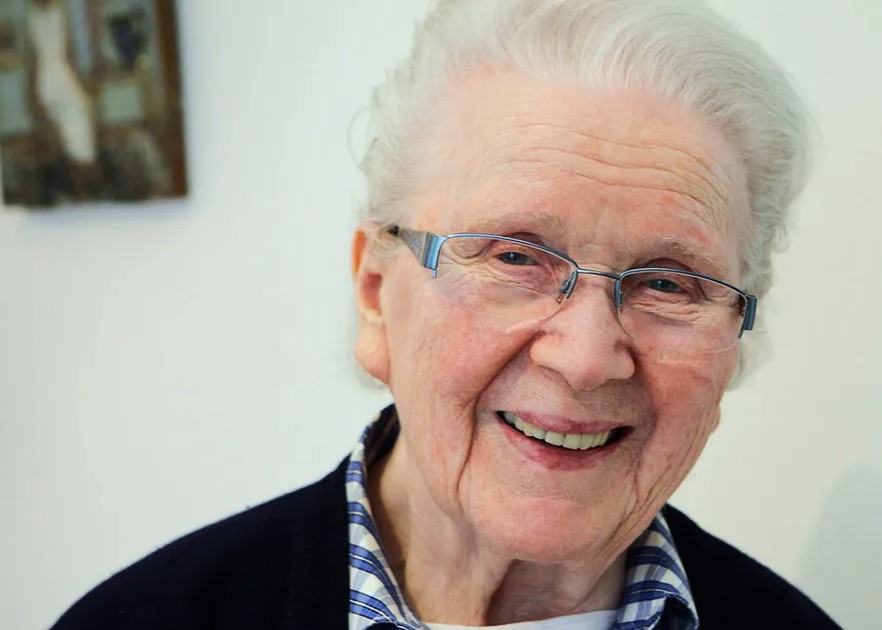
The popularity of Aurinkopullo varies. In the 1990s, the bottle was highly sought after, then there were a few quieter years, and now there is demand again, especially for the largest size.
Japanese buyers often purchase the small bottles as souvenirs from Finland.
The Aurinkopullo Club’s website states that there could be up to 76 different variations of the bottle.
Special editions include the heavy crystal bottle and the model made for Finnair. It is a challenging goal for a collector to obtain all of them in their collection!
Aurinkopullo – Sizes And Colors
The smallest size was produced from 1970 to 1974. The largest Aurinkopullot were made by blowing into a mold, the smaller ones by a semi-automatic machine, and the smallest from pressed glass. The second largest (3/4) bottles are made from cased glass.
Aurinkopullo Sizes
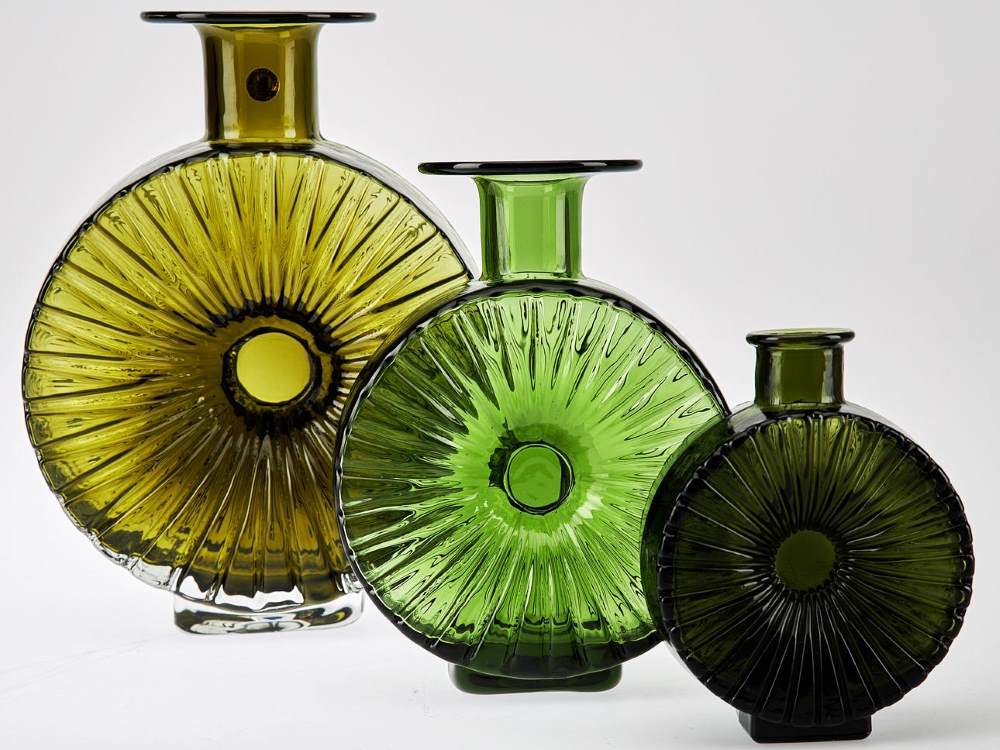
Aurinkopullo have been produced in four different sizes:
1/4
smallest size – height 12.5 cm, weight 300 g
2/4
height 17 cm, weight 600-870 g
3/4
height 23 cm, weight 1,200 g
4/4
largest size – height 32 cm, weight 4,000 g
Aurinkopullo Colors

Aurinkopullo come in six main colors and a total of 17-20 distinct shade variations (I – XVII).
- Colorless
- colorless (I)*
- crystal (Ib)
- Yellow
- yellow (II)
- honey / champagne (III)
- Green
- light green (IV)**
- basic green / grass (V)
- moss green / olive (VI)***
- Blue
- light blue (VIII)
- cobalt blue (IX)
- blue-grey (X)
- light turquoise (XI)
- dark turquoise (XII)
- Brown
- light brown (XIII)
- amber brown (XIV)
- dark brown (XV)
- Violet
- violet / light reddish-grey (XVI)
- violet / dark reddish-grey (XVII)
*) Colorless includes clear and the so-called old glass shade.
**) Light green also has an extra light shade for the smallest size (1/4).
***) Olive is only for the smallest bottle, and it’s even darker than moss.
The History
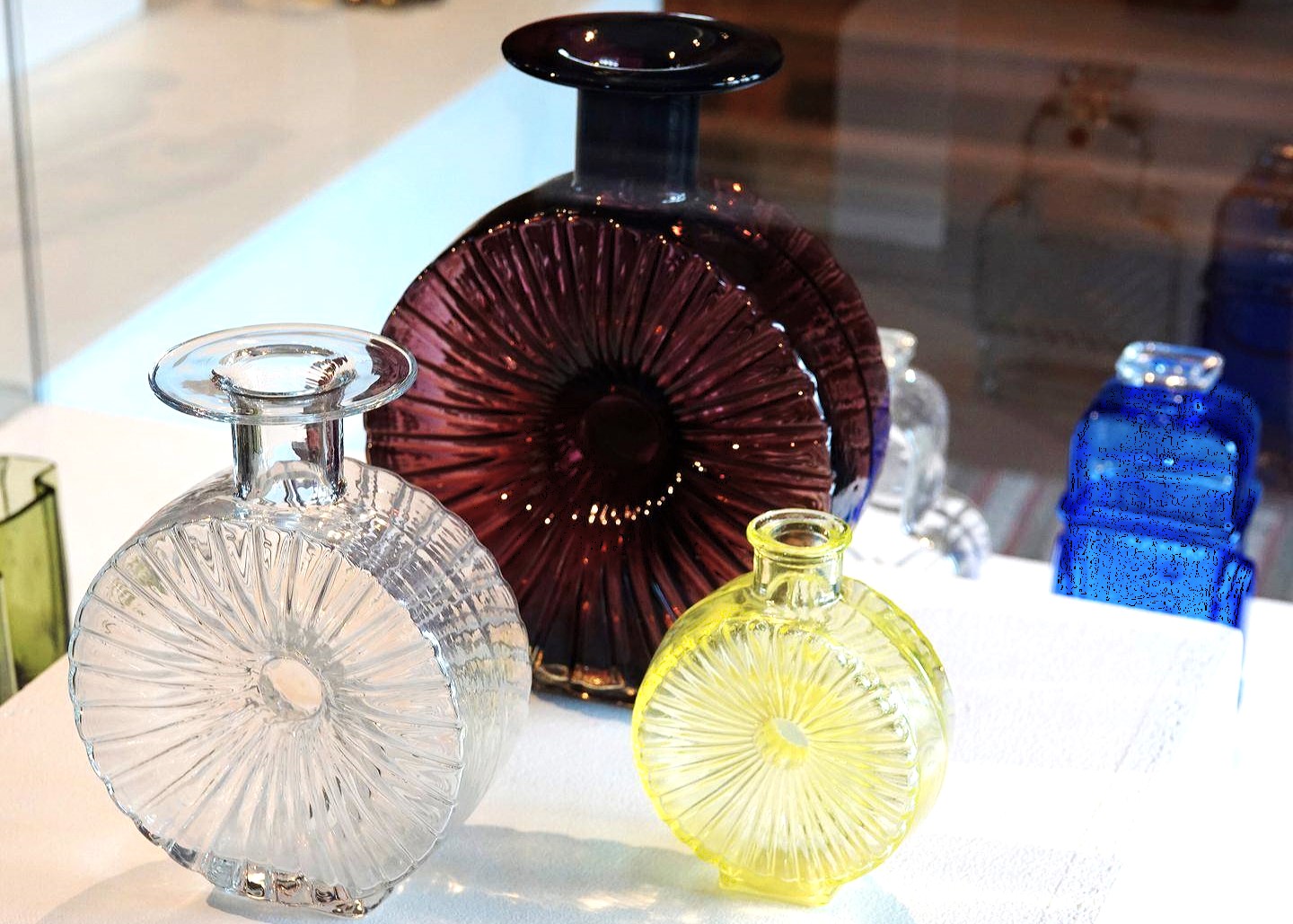
1962 – Helena Tynell designs Aurinkopullo for Riihimäki Glass. Tynell’s design sketches are marked with “Aurinko,” and the production drawings from the mold workshop are marked with “Sun bottle Aurinko” and “Decorative Bottle Aurinko”.
1964-1968 – The bottles are produced by mouth-blowing into wooden molds in three sizes. In product catalog number 1394, they are listed under the name “Flower Vase“.
1966 – Opening of the new blowing room. A special model was blown there, with the mouth not turned flat (long neck). These 18 cm high clear bottles were intentionally made from secondary glass mass for invited guests only on that day. The bottles are signed with the date 12.11.66.
1966-1968 – 12.5 cm high bottles are produced by mouth-blowing with product number 1967, named “Flower Bottle,” and product number 1968, named “Decorative Bottle“.
1969-1970 – Blowing of the 23 cm and 17 cm high bottles continues with number 1394, named “Vase“.
1969 – A mold for the small Aurinkopullo is made for a semi-automatic machine. Small Aurinkopullo bottles were produced from 1970-1974 by semi-automatic machine with product number 1394, listed in the product catalog under the name “Vase“.
1974 – Production of Aurinkopullo ends.
2004 – The Aurinkopullo Club is founded at the Finnish Glass Museum on June 6. The club’s purpose is to research and document the history of Aurinkopullo designed by Helena Tynell and produced by Riihimäki Glass Company.
